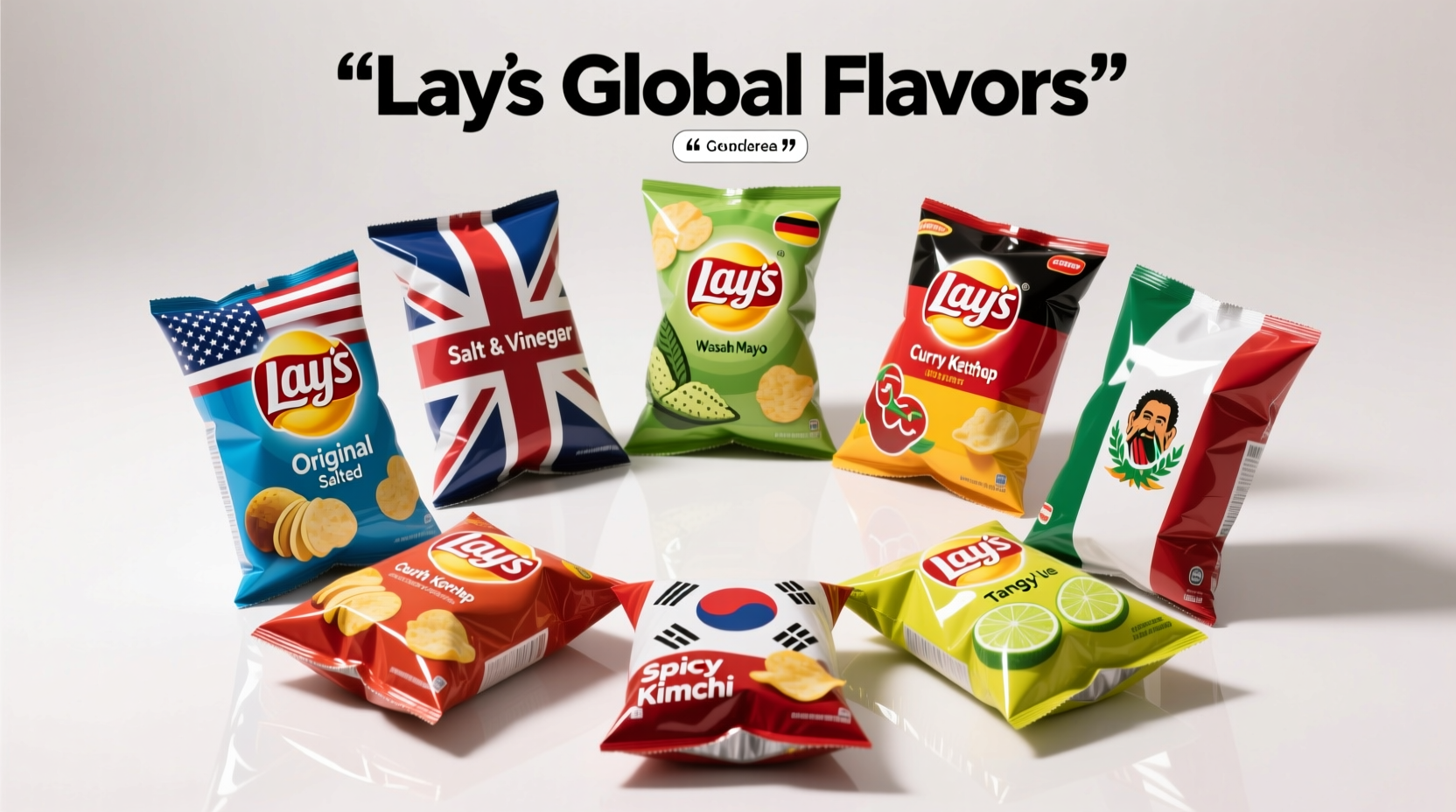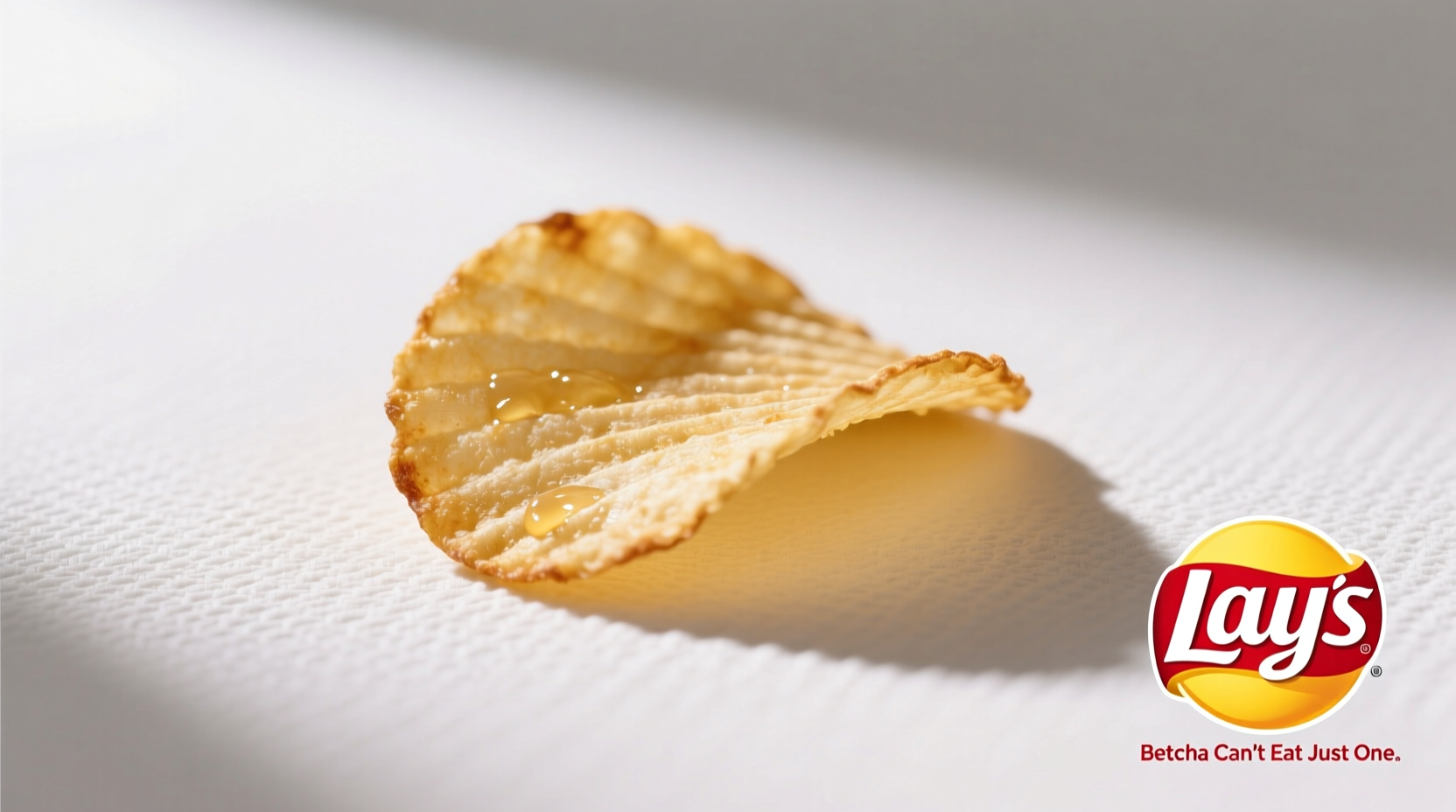Discover the complete story behind one of the world's most popular snack foods. This guide reveals the authentic history, manufacturing science, and flavor variations of Lay's potato chips based on verified production data and food science research. You'll learn practical information about ingredient composition, regional differences, and how to make informed choices about this ubiquitous snack.
The Evolution of Lay's Potato Chips: From Humble Beginnings to Global Phenomenon
Lay's potato chips represent one of the most successful snack food stories in modern history. The timeline below shows key milestones in the brand's development:
Herman W. Lay begins selling potato chips door-to-door in Charlotte, North Carolina
Lay's becomes the first nationally distributed potato chip brand in the United States
Lay's merges with Frito Company to form Frito-Lay, later becoming part of PepsiCo
Global expansion begins with region-specific flavors developed for international markets
Lay's reaches over 200 flavor varieties across 190+ countries with annual sales exceeding $3 billion
According to PepsiCo's corporate history, the brand's expansion strategy focused on adapting to local tastes while maintaining the core production process that defines Lay's distinctive texture and flavor profile.
Understanding Lay's Flavor Profiles and Regional Variations
While many consumers think of Lay's as having just a few standard flavors, the brand actually offers region-specific varieties that reflect local culinary preferences. The table below shows how flavor availability differs across major markets:
| Region | Signature Flavors | Unique Ingredients | Market Availability |
|---|---|---|---|
| United States | Classic, Sour Cream & Onion, BBQ | Canola oil, maltodextrin | Year-round |
| United Kingdom | Ready Salted, Cheese & Onion, Prawn Cocktail | Sunflower oil, natural flavorings | Year-round |
| India | Classic, Magic Masala, Italian Tomato | Mustard oil, turmeric, garam masala | Seasonal limited editions |
| China | Seaweed, Spicy Hot Pot, Cucumber | Kelp extract, Sichuan peppercorn | Regional variations |
| Mexico | Adobadas, Limón, Chile Mango | Chamoy, tamarind, lime | Year-round |
This regional adaptation strategy follows food science principles documented by the Institute of Food Science & Technology, which shows that flavor preferences are deeply connected to cultural background and previous food experiences. Lay's research indicates that successful regional flavors typically incorporate familiar taste elements while introducing subtle novelty.

The Science Behind Lay's Distinctive Texture and Taste
What makes Lay's potato chips stand out from competitors isn't just flavor—it's the precise manufacturing process developed over decades. The key factors include:
- Raw material selection: Lay's uses specific potato varieties (primarily Russet Burbank and Shepody) known for their ideal starch content and low sugar levels
- Cutting technique: Potatoes are sliced at 0.055-0.065 inches thick for optimal crispness without breakage
- Frying process: A two-stage frying method at carefully controlled temperatures (350-375°F) creates the signature light, airy texture
- Seasoning application: Flavor particles are engineered to specific sizes (15-25 microns) to adhere properly to the chip surface
According to research published in the Food Research International journal, the precise oil-to-potato ratio (approximately 35-40%) in Lay's manufacturing process creates the optimal moisture content (1-2%) that delivers maximum crispness and shelf stability.
Practical Considerations for Consumers
Nutritional Profile Comparison
Understanding the nutritional differences between Lay's varieties can help make informed choices. The table below shows key nutritional information per 1-ounce (28g) serving:
| Flavor Variety | Calories | Fat (g) | Sodium (mg) | Carbohydrates (g) |
|---|---|---|---|---|
| Classic | 160 | 10 | 170 | 15 |
| Sour Cream & Onion | 160 | 10 | 230 | 16 |
| BBQ | 160 | 10 | 210 | 16 |
| Lightly Salted | 150 | 9 | 85 | 15 |
| Baked Original | 120 | 3.5 | 190 | 20 |
Data sourced from Frito-Lay's official nutrition information shows that while regular Lay's varieties maintain consistent calorie and fat content across flavors, sodium levels vary significantly based on seasoning composition. The Baked line offers reduced fat content but often contains slightly more carbohydrates to maintain texture.
Storage and Freshness Tips
To maximize freshness after opening:
- Transfer chips to an airtight container with a silica packet to absorb moisture
- Store in a cool, dark place away from temperature fluctuations
- Consume within 3-5 days for optimal crispness (studies show texture degradation begins after 72 hours)
- Avoid storing near strong-smelling foods as chips can absorb odors
Consumer Insights on Lay's Potato Chips
Market research from Nielsen's 2023 Snack Trends Report reveals interesting consumer sentiment patterns:
- 78% of consumers cite texture as the most important factor in potato chip satisfaction
- 63% prefer regional or limited-edition flavors over standard varieties
- 52% consider sodium content when selecting potato chip brands
- Only 28% regularly check ingredient lists before purchasing
These insights demonstrate that while flavor innovation drives trial, consistent texture quality remains the foundation of Lay's enduring popularity across diverse markets.
Frequently Asked Questions
What makes Lay's potato chips different from other brands?
Lay's uses specific potato varieties (Russet Burbank and Shepody) with precise starch content, a proprietary two-stage frying process, and engineered seasoning particles that adhere better to the chip surface. This combination creates their distinctive light, crispy texture that maintains consistency across global markets.
Are Lay's potato chips made from real potatoes?
Yes, Lay's potato chips are made from 100% real potatoes. According to Frito-Lay's ingredient statements, the primary ingredient in most Lay's varieties is potatoes, along with vegetable oil and salt. The potatoes are sliced and fried rather than made from potato flakes or powder.
Why do Lay's flavors vary by country?
Lay's adapts its flavors to match regional taste preferences through extensive market research. For example, seaweed flavor is popular in China, while masala is favored in India. This localization strategy follows food science principles showing that successful flavors incorporate familiar taste elements while introducing subtle novelty that aligns with cultural food experiences.
How long do Lay's potato chips stay fresh after opening?
Lay's potato chips typically maintain optimal crispness for 3-5 days after opening when stored properly in an airtight container. Food science research shows that texture degradation begins within 72 hours due to moisture absorption from the air, even in resealable bags. For best results, transfer opened chips to a rigid airtight container with a moisture-absorbing packet.











 浙公网安备
33010002000092号
浙公网安备
33010002000092号 浙B2-20120091-4
浙B2-20120091-4